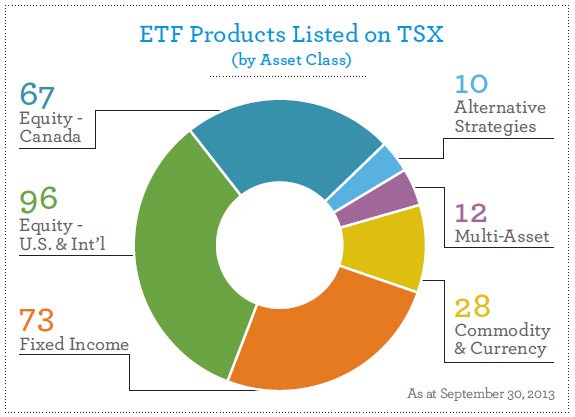Top Canadian Preferred Share ETFs
Post on: 1 Июль, 2015 No Comment

P referred shares are an odd asset class. They arent quite equities, and they arent quite bonds. They are similar to equities in that they pay a dividend, and Canadian preferred shares are eligible for the dividend tax credit. Preferred shares are also traded on the stock market and while they are not as volatile as equities, they still trade at the mercy of the markets.
Preferred shares are similar to bonds in that they are sensitive to interest rates, and preferred shares have a number of classes or types (retractable, perpetual, callable etc). This means that when a company issues a class of preferred shares, like bonds, they can have an end date, a fixed or floating distribution rate (among other features).
In terms of safety of the dividend, it falls in between common shares and bonds. If a company decides to cut their dividend, then the common shares would lose their dividend before preferred shares are hit. Its noteworthy to emphasize that companies can cut their preferred share dividends. However, if you pick preferred shares of companies that have a long history of increasing their common share class dividends, then the chances of the preferred share dividends being cut is reduced.
Anyway you look at it, the details can be a bit confusing and most investors are looking for an easy solution to take advantage of the yields. Best way to achieve this is by buying an ETF that holds a basket of preferred shares and flows the yield back to investors.
Top Canadian Preferred Share ETFs
1. BMO S&P/TSX Laddered Preferred Share Index ETF (Symbol: ZPR; MER: 0.45%; Net Assets: $822M; Holdings: 122)
This ETF follows the S&P/TSX Preferred Share Laddered Index. This index tracks Canadian rate reset preferred shares and uses a five year laddered structure where annual buckets are equal weighted and each bucket are market capitalization weighted. This is a similar concept to a GIC or bond ladder .
This ETF currently yields around 4.5%, coincidentally, all of the ETFs are very close in yield. In terms of liquidity, it is in second place where trading volume is slightly less than CPD listed below. Although ZPR and CPD (below) are very close, I picked the BMO product due to to a slightly lower MER.
2. iShares S&P/TSX Canadian Preferred Share Index (Symbol: CPD; MER: 0.50%; Net Assets: $1.4B; Holdings: 202)
This ETF tracks the S&P/TSX Preferred Share Index and is the largest and most liquid (highest volume) ETF of the bunch. This is a popular ETF because it is diversified, has the highest liquidity, and has a yield near the top of the group (similar to ZPR). However, the MER is a little higher than the other contenders in this group. Both CPD and ZPR are decent choices for preferred share exposure.
3. PowerShares Canadian Preferred Share Index ETF (Symbol: PPS; MER: 0.45%; Net Assets: $131M; Holdings: 50)
This ETF tracks the NASDAQ Select Canadian Preferred Share Index which is very heavy (60%+) in financial preferred shares (big banks etc). The bright side of this ETF is that it is among the cheapest with a MER of 0.45% and a yield that is close to CPD and ZPR. The downside is that it has the lowest liquidity of the group and low diversification with 50 holdings.

4. Horizons Active Preferred Share ETF (Symbol: HPR; MER: 0.55%; Net Assets: $213M; Holdings: only 10 displayed on website)
As the name suggests, this is an actively managed ETF that follows a set of investing rules. These rules include:
- Primarily invests in the preferred securities of Canadian issuers whose debt, generally, at a minimum, have an investment grade rating at the time of purchase.
- May also invest in preferred shares of companies located in the United States, fixed income securities of Canadian and U.S. issuers, including other income generating securities.
- May also invest in Canadian equity securities that have attractive dividend yields and exchange traded funds that issue index participation units that pay dividend income.
With a yield on HPR currently 0.20% lower than the three above, combined with a higher MER, low volume and low diversification, this ETF does not quite make the cut.
Final Thoughts
I can see how income investors are attracted to preferred shares due to their tax efficient dividend distributions and relatively low volatility in stable interest rate environments. Personally, I would use an ETF over purchasing an individual preferred share with my top picks being either ZPR or CPD.
Do you hold any preferred shares in your portfolio?














